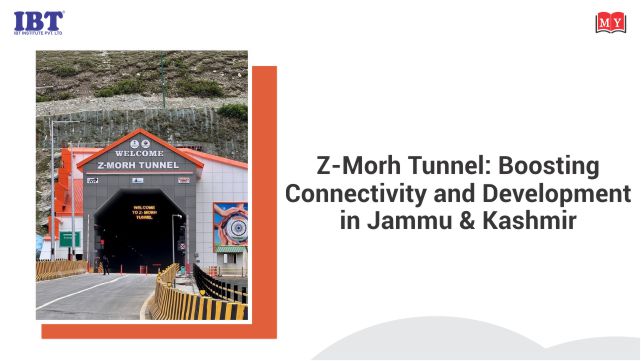
- Main Tunnel: 6.5 km long, two-lane, bi-directional road tunnel.
- Escape Tunnel: 7.5 m wide parallel tunnel for emergencies.
- Approach Roads: 6.05 km connecting to National Highway 1.
- Traffic Capacity: Designed for 1,000 vehicles per hour at speeds up to 80 km/h.
- Elevation: Built at 2,637 meters above sea level.
- Safety Features: Includes emergency exits, ventilation systems, and fire safety measures.
Construction Timeline and Challenges
The project has experienced several milestones and challenges:
- 2012: Foundation stone laid by the Minister of Road Transport and Highways.
- May 2015: Construction commenced.
- July 2018: Work stalled due to financial constraints faced by the developer.
- August 2019: APCO Infratech awarded the contract to complete the tunnel.
- July 2020: Construction resumed.
- June 2021: Both ends of the tunnel were through.
- January 2025: Tunnel inaugurated and operational.
The project faced delays due to financial issues and regional security concerns, including an incident in October 2024 where workers were attacked by insurgents, underscoring the challenges in executing infrastructure projects in sensitive areas.
Future Developments
- Broader Initiative: The Z-Morh Tunnel is part of efforts to enhance regional connectivity.
- Zoji-La Tunnel: A 14 km tunnel connecting Sonamarg and Ladakh is under construction.
- Completion Timeline: Zoji-La Tunnel is expected to be completed by December 2026.
- Reduced Distance: Travel between Srinagar and Leh will decrease from 49 km to 43 km.
- Increased Speed: Vehicle speeds will rise from 30 km/h to 70 km/h, improving efficiency.
Impact on Connectivity and Trade
One of the major impacts of the Z-Morh Tunnel will be its contribution to better connectivity for both residents and businesses in Jammu & Kashmir. Currently, the journey from Srinagar to Sonamarg, which is just 80 kilometers, can take up to 3-4 hours due to the narrow, winding roads and weather-related disruptions. The Z-Morh Tunnel will allow vehicles to travel in a safer, faster manner, reducing travel time to just 15-20 minutes.
Tourism Impact
The Z-Morh Tunnel will enhance Kashmir’s connectivity to national and international markets, enabling smoother access for both inbound and outbound tourism. This can help Jammu & Kashmir regain its reputation as a premier tourist destination, which has suffered in recent years due to security concerns and restricted access.
Security Benefits
The Z-Morh Tunnel also has strategic significance in terms of security. The region is of strategic importance, and the tunnel will serve as an important route for the Indian Army. It will provide the military with a more secure and quicker passage for transportation, particularly in times of emergencies or in adverse weather conditions, when traditional routes are impassable. This enhances the operational readiness and mobility of defense forces in the region, ensuring that the security infrastructure of Jammu & Kashmir is robust.
 4.5/5
4.5/5








